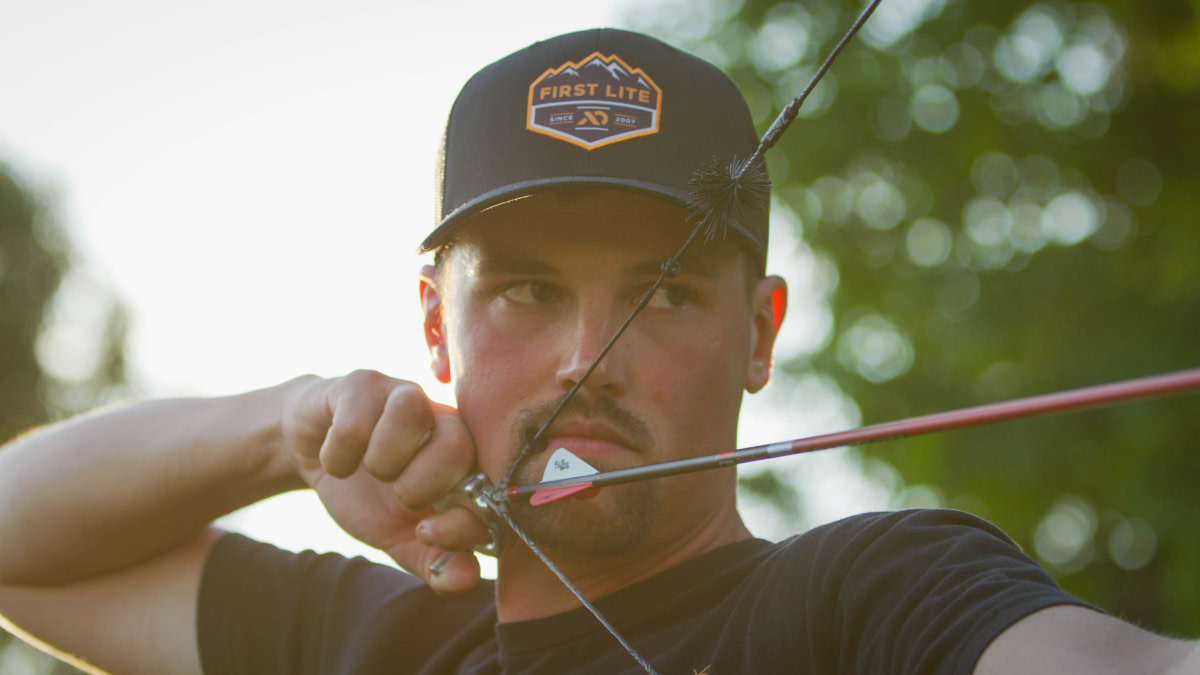
I bet this sounds familiar: You draw your bow and watch as the pin floats back and forth around the bullseye. You struggle to keep still, and then as soon as it’s about to touch the center of the target, you hammer the trigger. Or, maybe you draw your bow, aim, and just as the pin touches the bullseye, your body jerks uncontrollably, just barely keeping from firing a shot. In some cases, you even shoot, sending an arrow off beyond the target.
If any of that resonates, you’re likely dealing with something that is known as target panic. The solution, for many people, is a back tension release.
I know all of this because I recently experienced all of the above. After nearly two decades of bowhunting, I finally came to realize that what I was occasionally brushing off as a “rushed shot” was actually symptomatic of bigger issues. I’m not alone, as I found out.
Since publicly sharing my challenges on the Wired To Hunt podcast, I’ve heard from dozens, if not hundreds, of others who have been in the same boat. While it can come in many forms, the essence of target panic is a loss of control in the moment of truth because of an anticipation of the shot.
Historically speaking, being able to anticipate and react to a significant impact, such as the release of a bow, has been a good thing for the human body. Evolution pushed homo sapiens over the millennia to quickly adapt to, anticipate, and react to physical stimuli. Those who did it well survived, and we’re here because of it. But, in the case of consistently shooting archery equipment, it’s an evolutionary adaptation that bites us in the ass. Rather than an anticipated release, resulting in all of these jerks and pulls and punches, an archer should strive for the opposite. A surprise release is what happens when a bow goes off without the body being able to anticipate and react to the impending impact. This can be achieved a number of ways, but nothing makes it easier and more consistent than an actual back tension release.
A back tension style release completely removes the ability for an anticipated shot by removing ultimate control from the shooter. There is no trigger to punch or button to push. The only way for the shot to break is for the shooter to slowly pull back until, once a certain amount of tension builds up, the bow releases—always to the surprise of the shooter.
When I first heard about this style of shooting, I was skeptical. Not only did it seem uncomfortable to give up control, but it sounded downright impractical for in-the-field application. But, after “rushing” one too many shots last year, I decided I needed to take this final dramatic step… and I’ve been floored by the results.
This year I switched to the Silverback Tension Release. The shooting process with this release is almost Zen-like. I draw back, settle into my anchor position, drop the pin onto the bullseye, let it float, and then pull, pull, pull, pull. The next thing I know the bow has fired, and an arrow is downrange somewhere very near where I was aiming. No longer am I worrying about a floating pin and trying to time the trigger pull right when the pin hits the bull, no more am I stressed about flinching at the shot, or rushing the trigger pull when the pressure rises from an audience.
I just draw, settle, float, and pull. Draw, settle, float, and pull. Draw, settle, float, and pull. Over and over and over.
It’s almost a meditation, and it works. My shots are more consistent, never rushed, and almost completely without the occasional flyers I dealt with due to little twitches or pulls.
Of course, the ultimate test will come with an animal in range. But, from what I gather listening to the experiences of others, I should be just as pleased with my in-field results. Well known bowhunters such as John Dudley, Joe Rogan, Brian Call, and Andy May have all experienced positive results with similar releases, along with thousands of others in the bowhunting community.
If you’ve ever felt the bitter sting of a rushed, pulled, or punched shot, it might be worth considering a back tension release. While I’ve only just begun my own back tension journey, I can already tell it’s leading me to a good place.
Feature image via Captured Creative.






